Abstract
C3H mice immunized with rat erythrocytes developed autoimmune haemolytic anaemia which was very similar to the `warm-type' autoimmune haemolytic anaemia of man. There was evidence of anaemia, reticulocytosis, shortened survival times of 51Cr-labelled erythrocytes in vivo, and a high incidence of positive direct Coombs' tests. There was no evidence of spherocytosis or of increased susceptibility to osmotically induced lysis. Bone marrow smears showed evidence of erythroid hyperplasia. Splenectomized mice were more severely affected than unsplenectomized mice. In these mice anaemia was more severe, individual positive direct Coombs' tests were stronger; 51Cr-labelled erythrocytes were cleared faster and the compensatory erythroid hyperplasia was less marked. After immunization was stopped both groups of mice quickly became haematologically normal. However, in mice in which immunization was continued, the blood pictures eventually reverted towards normal except for the persistent positive direct Coombs' tests. C57/B1 mice were also susceptible to the disease process but to a much lesser degree than C3H mice.
Full text
PDF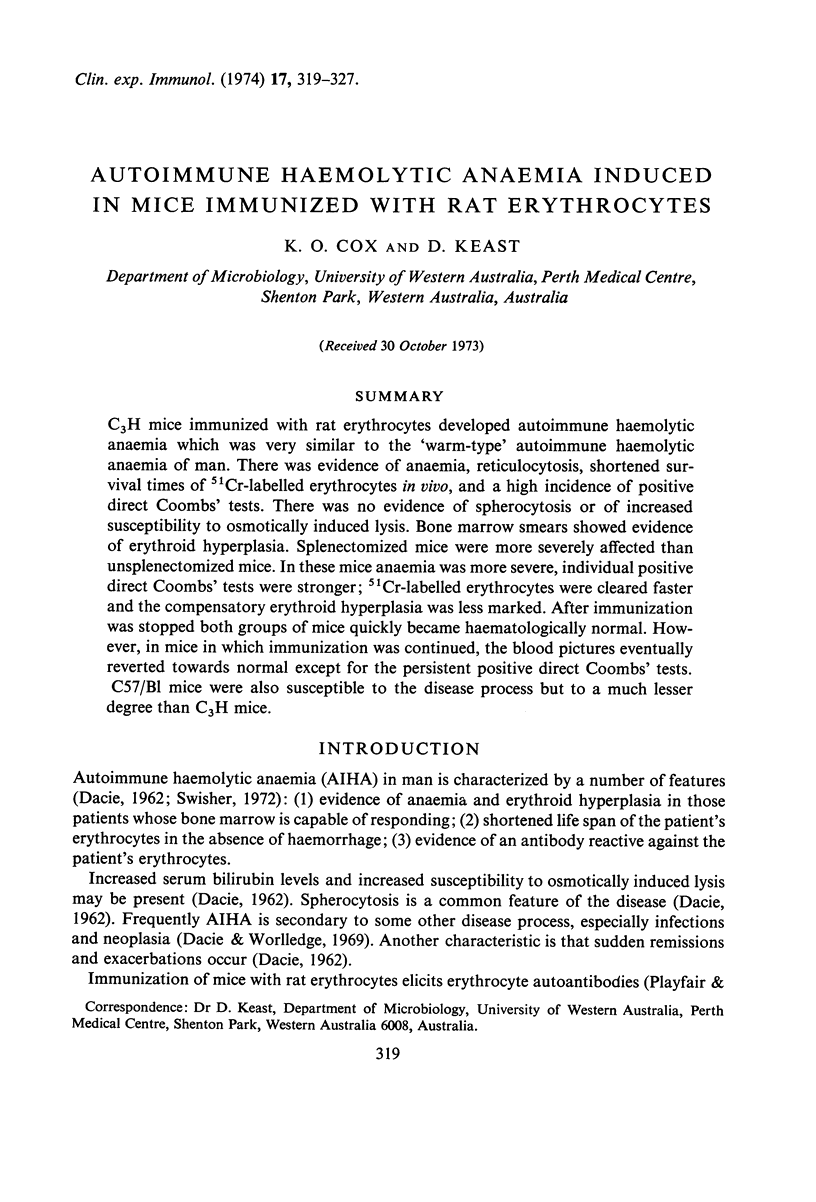
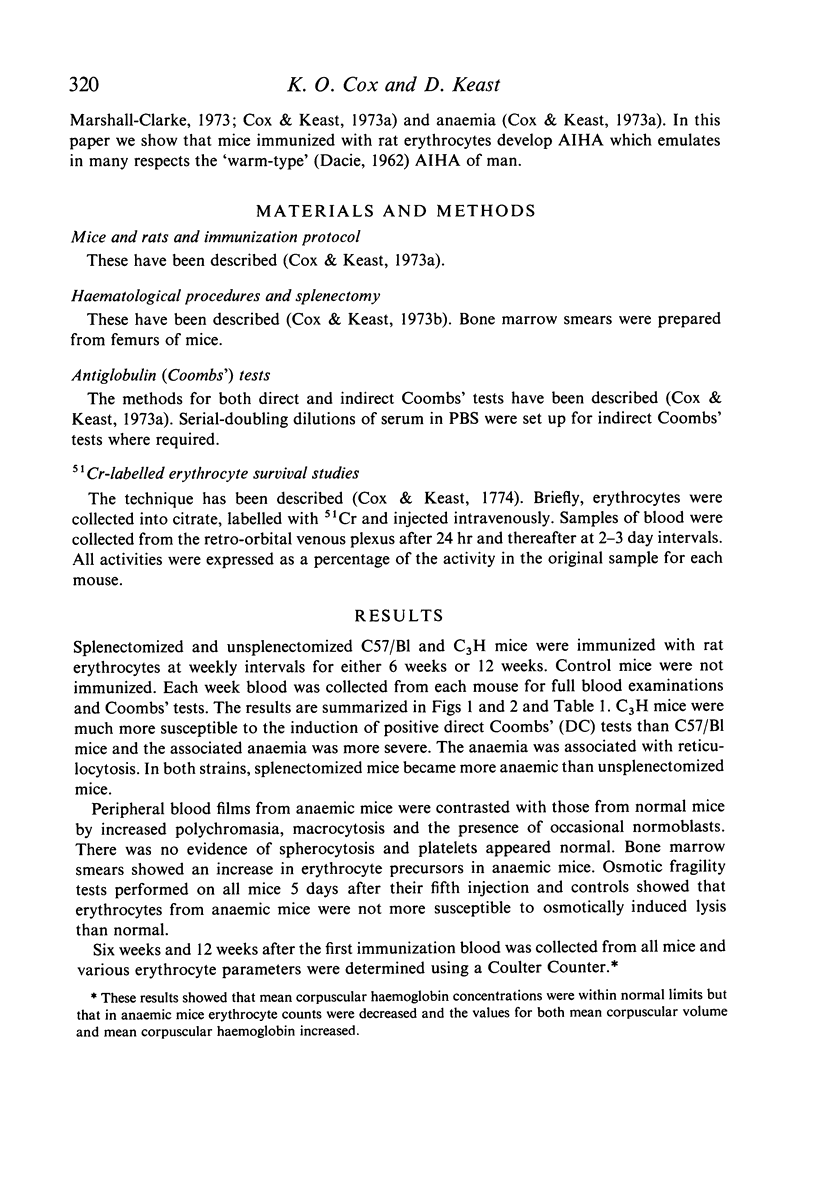
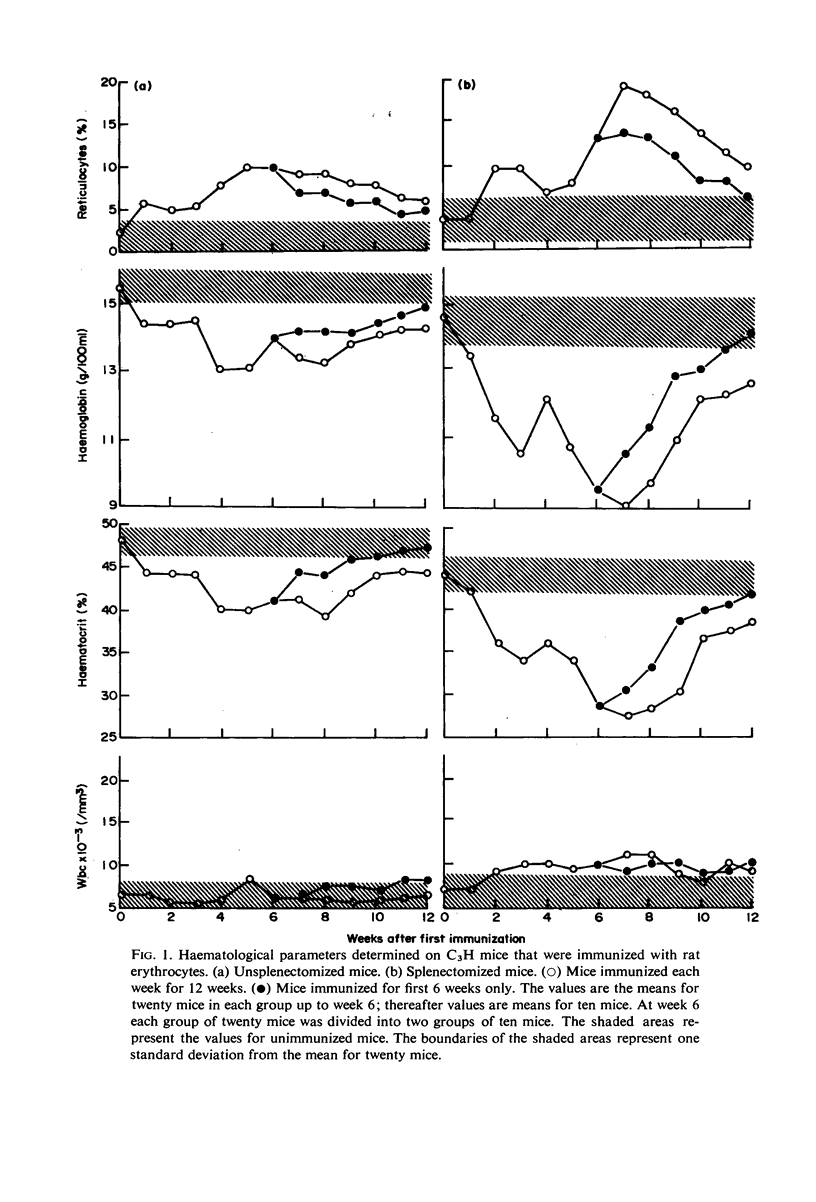
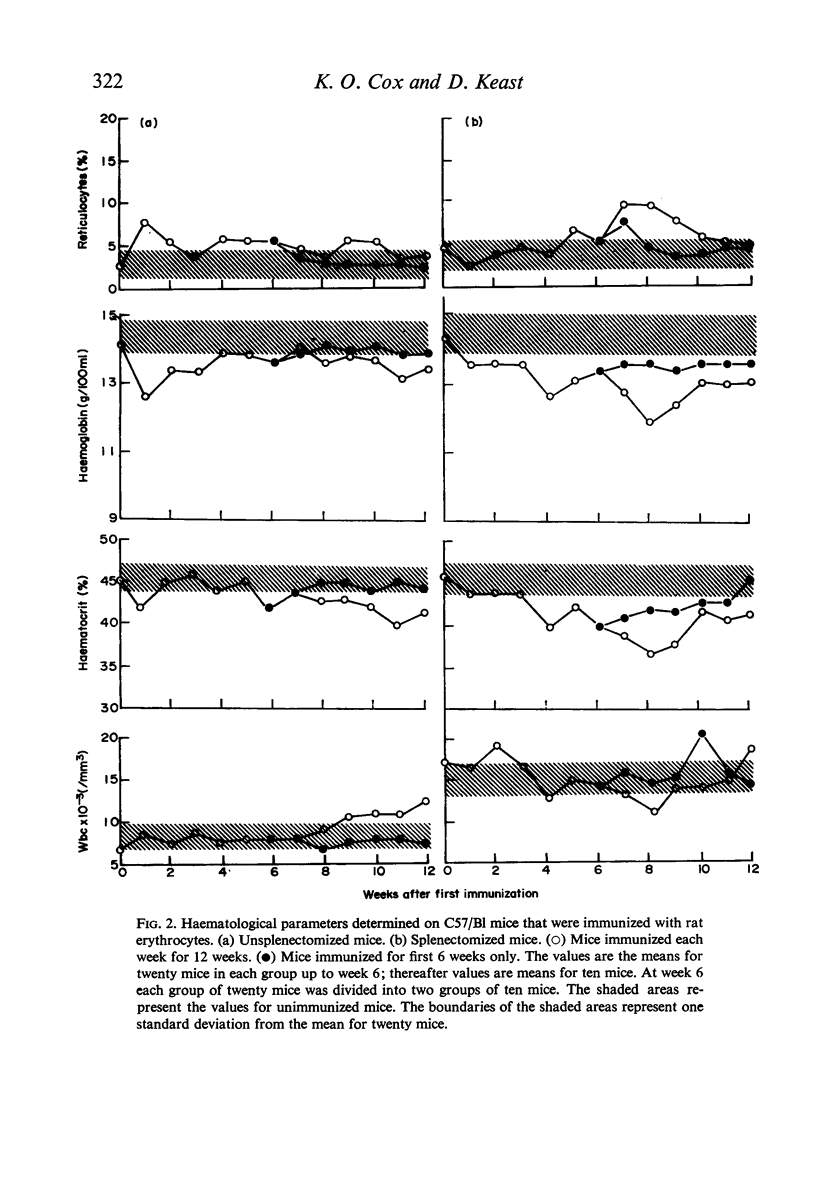
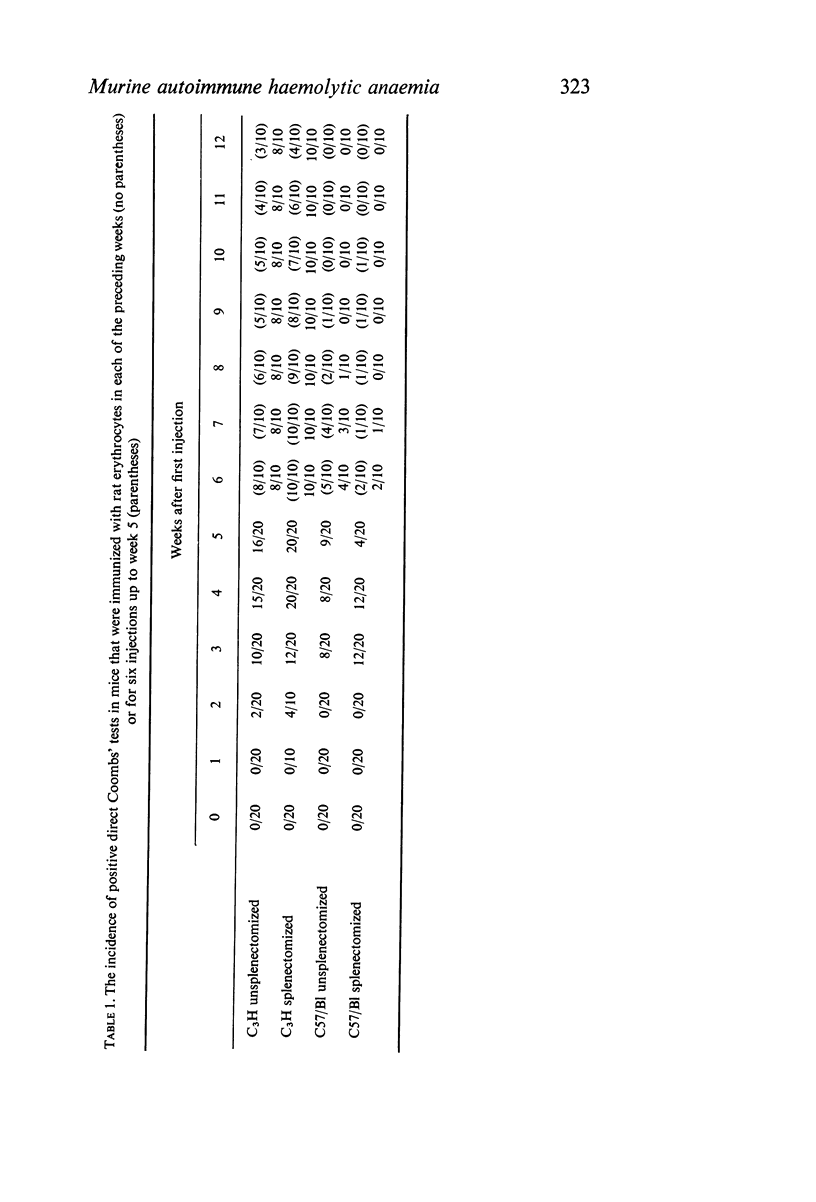
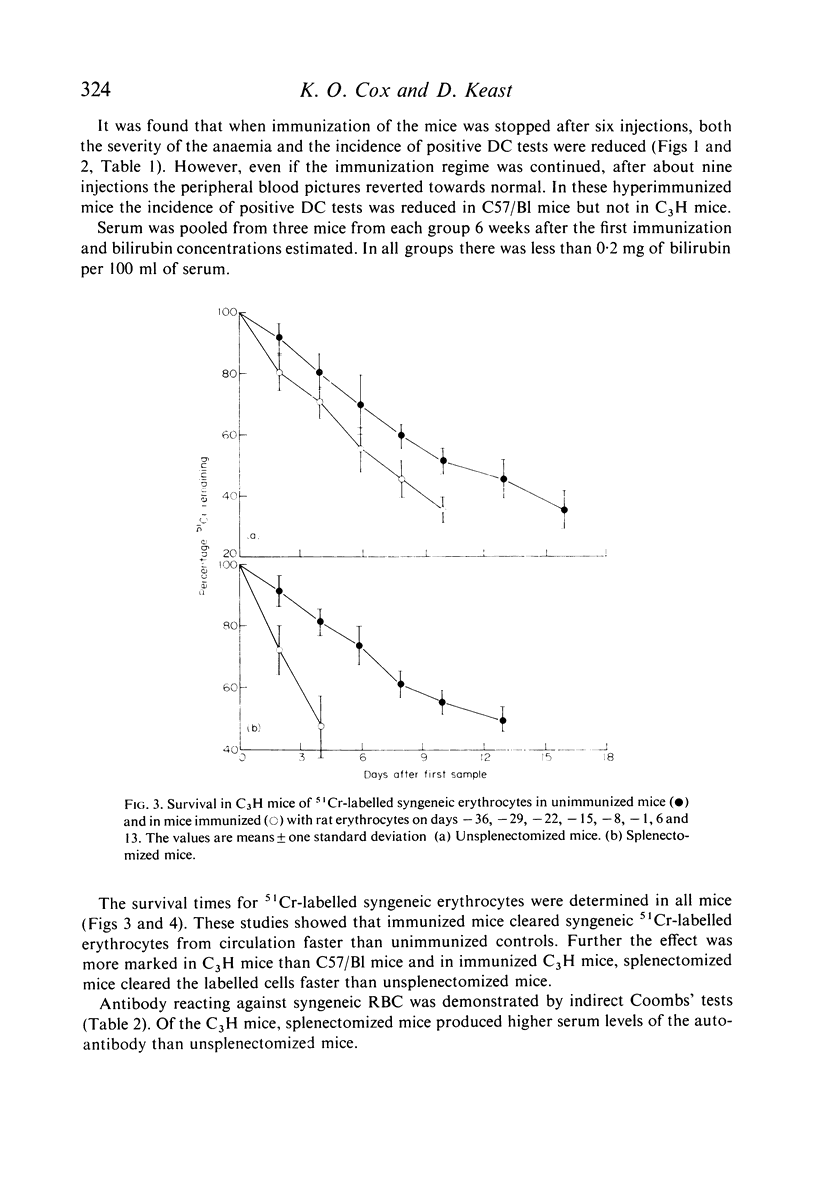
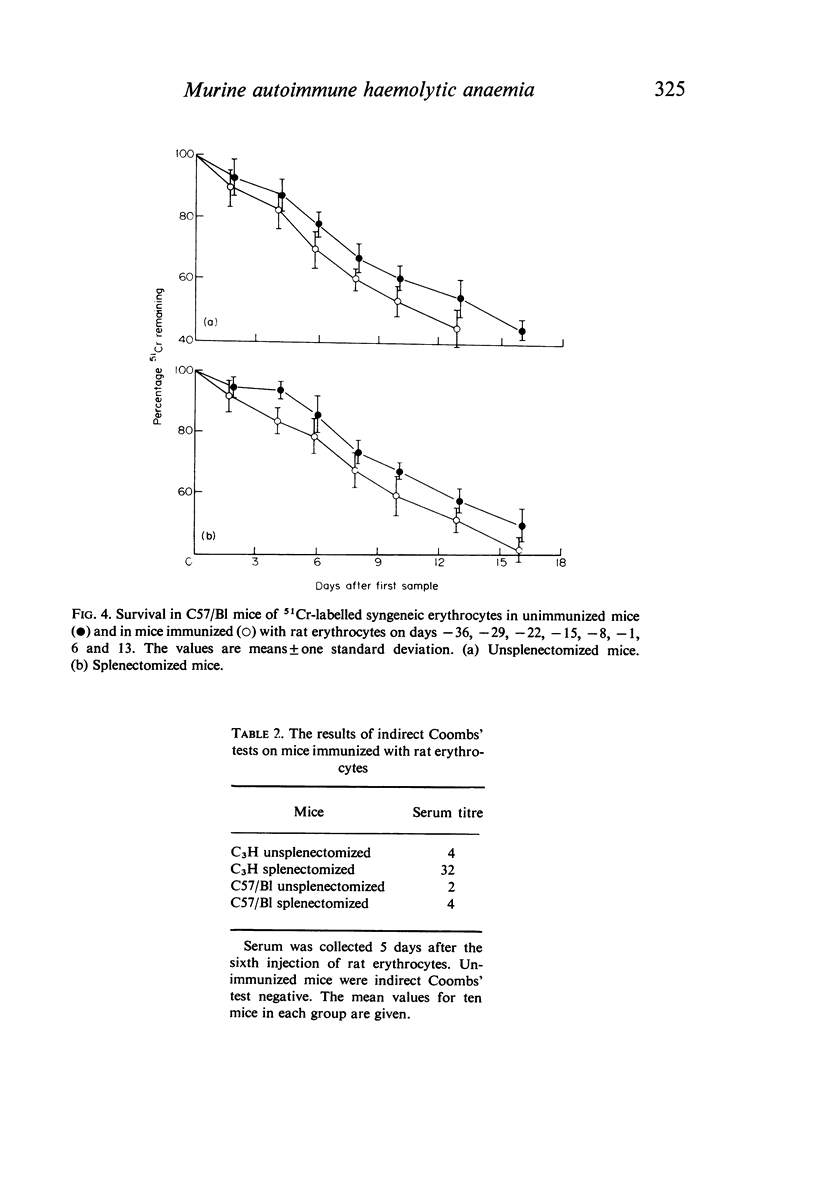
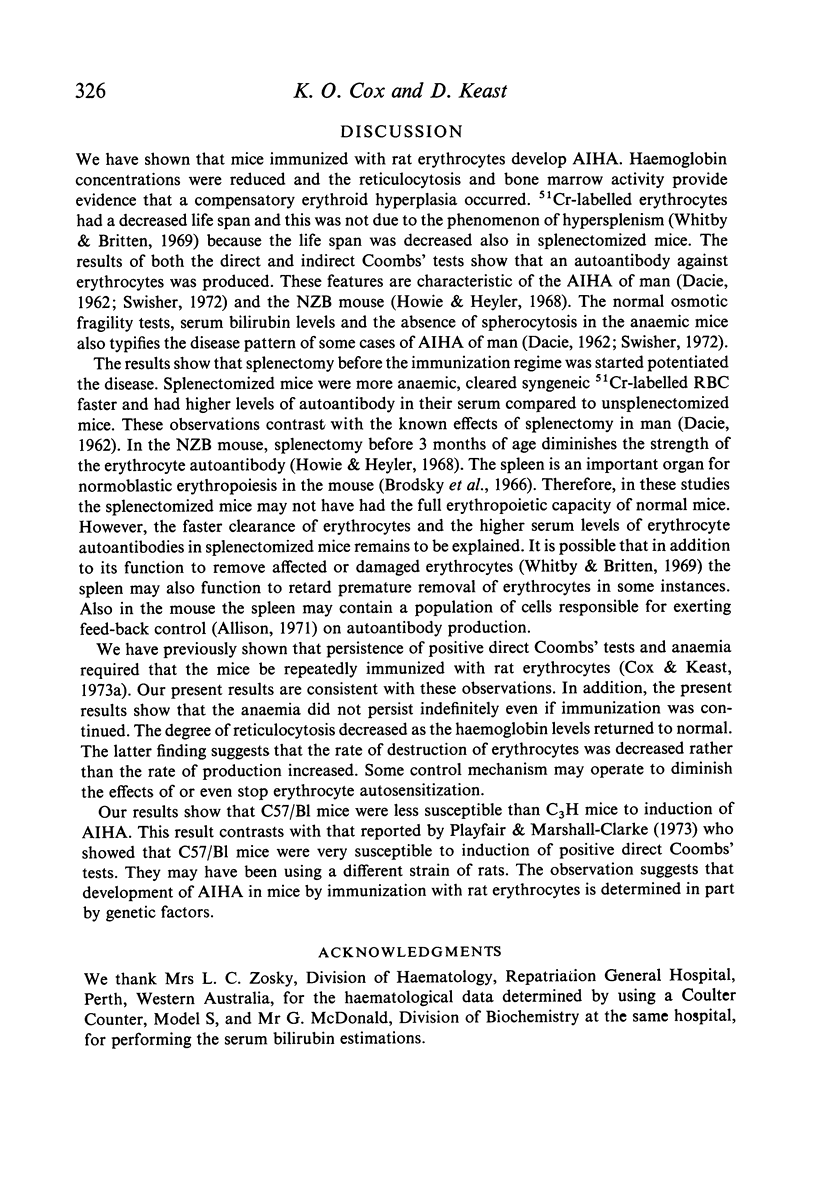
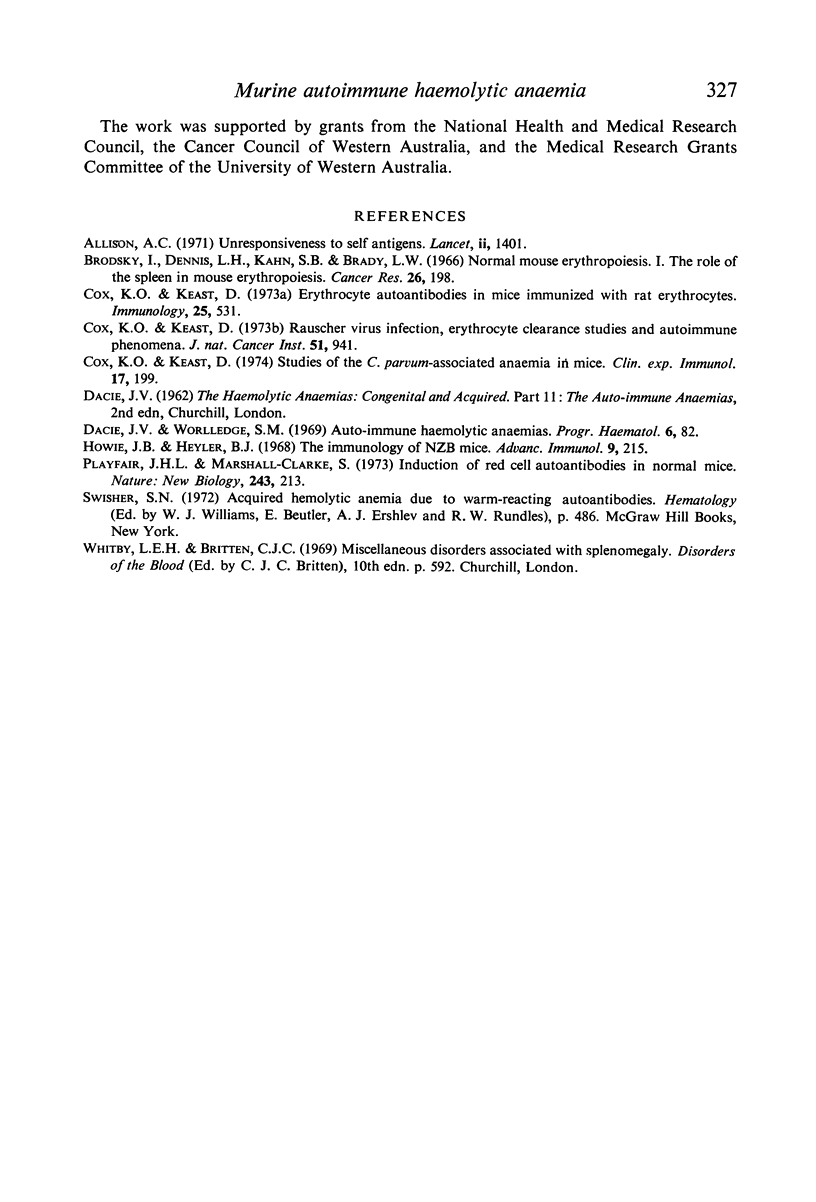
Selected References
These references are in PubMed. This may not be the complete list of references from this article.
- Allison A. C. Unresponsiveness to self antigens. Lancet. 1971 Dec 25;2(7739):1401–1403. doi: 10.1016/s0140-6736(71)90673-8. [DOI] [PubMed] [Google Scholar]
- Brodsky I., Dennis L. H., Kahn S. B., Brady L. W. Normal mouse erythropoiesis. I. The role of the spleen in mouse erythropoiesis. Cancer Res. 1966 Feb;26(2):198–201. [PubMed] [Google Scholar]
- Cox K. O., Keast D. Erythrocyte autoantibodies induced in mice immunized with rat erythrocytes. Immunology. 1973 Sep;25(3):531–539. [PMC free article] [PubMed] [Google Scholar]
- Cox K. O., Keast D. Studies of the Corynebacterium parvum-associated anaemia in mice. Clin Exp Immunol. 1974 May;17(1):199–207. [PMC free article] [PubMed] [Google Scholar]
- Croft W. A., Bryan G. T. Production of urinary bladder carcinomas in male hamsters by N-(4-(5-nitro-2-furyl)-2-thiazolyl)formamide, N-(4-(5-nitro-2-furyl)-2-thiazolyl)-acetamide, or formic acid 2-(4-(5-nitro-2-furyl)-2-thiazolyl)hydrazide. J Natl Cancer Inst. 1973 Sep;51(3):941–949. doi: 10.1093/jnci/51.3.941. [DOI] [PubMed] [Google Scholar]
- Dacie J. V., Worlledge S. M. Auto-immune hemolytic anemias. Prog Hematol. 1969;6:82–120. [PubMed] [Google Scholar]
- Howie J. B., Helyer B. J. The immunology and pathology of NZB mice. Adv Immunol. 1968;9:215–266. doi: 10.1016/s0065-2776(08)60444-7. [DOI] [PubMed] [Google Scholar]
- Playfair J. H., Marshall-Clarke S. Induction of red cell autoantibodies in normal mice. Nat New Biol. 1973 Jun 13;243(128):213–214. doi: 10.1038/newbio243213a0. [DOI] [PubMed] [Google Scholar]


